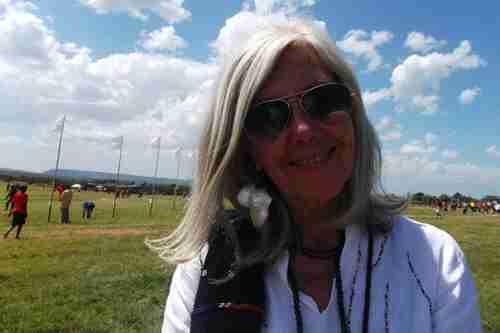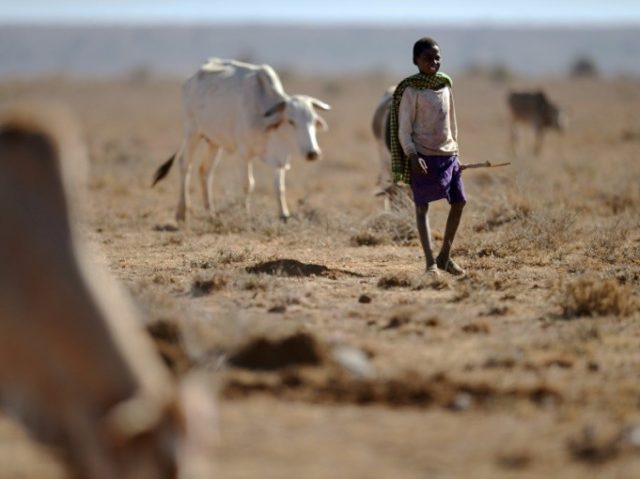This morning’s key headlines from GenerationalDynamics.com
- Kenya’s herders attack well-known conservationist, stoking tribal tensions
- Battle between Kenya’s farmers and herders morphs into tribal conflict
Kenya’s herders attack well-known conservationist, stoking tribal tensions

Kuki Gallmann
Well-known Italian conservationist Kuki Gallmann, 73, was shot in the stomach on Sunday by herders who invaded her Gallmann Laikipia Nature Conservancy in Laikipia county in Kenya’s Rift Valley. Gallmann was airlifted to Nairobi for treatment.
Hours later on the same day, a Kenya police reservists was shot and seriously injured by herders at the Sosian Ranch, also in Laikipia country. In early March, Tristan Voorspuy, a British citizen and former British army officer, was ambushed by herders and shot dead.
Ms. Gallmann’s Laikipia Nature Conservancy has been under attack by herders off and on for months. Last month, cattle herders burned down her lodge. The lodge is frequented mainly by European tourists, who can pay more than $650 a night to stay. However, no visitors were present when the lodge was burned down.
On Sunday, Ms. Gallmann was patrolling her ranch when she was ambushed and shot near her home. Security officers shot some of the herders and captured them.
The big picture, that I’ve described many times in Central African Republic, Rwanda, Burundi, Kenya, Sudan, South Sudan, and even America in the 1800s, is that this is part of a classic and recurring battle between herders and farmers. The farmers accuse the herders of letting the cattle eat their crops, while the herders accuse the farmers of planting on land that’s meant for grazing. If the farmers put up fences, then the herders knock them down. Daily Nation (Kenya) and NPR and Citizen TV (Kenya)
Related Articles
Battle between Kenya’s farmers and herders morphs into tribal conflict
Early in 2008, there was a period of extremely bloody inter-tribal violence in Kenya. The worst atrocity occurred when 30 people died in a fire. Dozens of people had gone to the church to escape increasing violence, when a youthful gang set the church on fire, trapping people inside.
The violence was described as “ethnic cleansing.” The Kalenjins, whose nomadic lifestyle was typical of herders, were “cleansing” a region of a different tribe, the Kikuyus, who were mostly farmers, either killing the Kikuyus or forcing them to leave the region. The violence was triggered when Mwai Kibaki, the leader of the Kikuyu tribe, was elected president of Kenya in December 2007.
Today’s renewed violence in and around the Rift Valley is also heavily tied into politics, especially with another election scheduled for August. President Uhuru Kenyatta is from the market-dominant Kikuyu tribe, while the opposition Coalition for Reform and Democracy (CORD), is led by Raila Odinga of the marginalized Luo tribe, which is an offshoot of the Kalenjins.
Dating back to British colonial times, the Kikuyu tribe has been market-dominant, and the Kikuyus, as well as Europeans like Gallmann, owned large tracts of land for farming and conservancy. As the population of Kalenjins has grown, the population of their cattle and other livestock has grown as well. So it was inevitable that sooner or later a clash would occur.
But farmers and landowners are claiming that politicians from the Kalenjins and other nomadic tribes are actually inciting violence by the herders. According to Martin Evans, chairman of the Laikipia Farmers’ Association:
It started a year ago. At the time it started, there was plenty of rain, it was nothing to do with lack of grass at that time so yes, I think it’s definitely being pushed by politicians.
Farmers are accusing politicians and police of being cattle owners who stand to gain from the attacks. According to an NPR analyst:
You have nomadic herders who are moving into private wildlife conservancies with thousands of heads of cattle. And in response, the Kenyan government launched a military-style operation to push the herders out. But what we’ve seen is an escalation of violence. Police have killed lots of cows. And the herders have responded by burning tourist lodges on the properties.
In the past, there was a friendly relationship between herders and farmers. Farmers would allow herders with small herds to graze on their conservancies. But in the past year, these small herds have turned into thousands of heads of cattle, and farms are being attacked, not by cattle, but by human invaders. After last month’s attack on Ms. Gallmann’s property, nearly 400 herders were arrested for crimes unrelated to grazing.
Politicians who incite tribal violence are really playing with fire. The current battles between herders and farmers is reviving many of the tribal hatreds that were present during the 2008 violence
The 2008 violence was so bad that many analysts feared that it would spread into a major war. As I wrote at the time, that was very unlikely to happen. Kenya’s last generational crisis war was the “Mau-Mau Rebellion.” Britain had been exerting a fairly heavy hand as a colonial power, starting from the 1850s. An independence movement began in earnest in the late 1940s, leading to the generational crisis civil war that began in 1952 and climaxed in 1956.
In 2008, only 52 years had passed since the climax of the previous generational crisis war. Generational Dynamics analysis of hundreds of wars in all places throughout history shows that a new crisis war very rarely begins until at least 58 years had passed since the climax of the previous crisis war. That is because until that time, there are still survivors of the previous crisis war in power, and they exert influence and power to prevent a new crisis war from occurring. But after 58 years or more have passed, the survivors no longer had power, and younger generations with no fear of war take over.
So in 2008, a bloody spurt of tribal violence flared, but it fizzled fairly quickly because the time was not yet ripe.
That was 2008. Today, Kenya is in a generational Crisis era, 61 years past the climax of the preceding crisis war, so few of the survivors of that war are still around. So when tribal violence begins in Kenya today, there’s a very real possibility that it could spiral into a full-scale generational crisis war, such as happened in Rwanda in 1994, or is happening today in the Central African Republic.
With a new election approaching in August, and with politicians inciting herders to violence, Kenya is in real danger of having a major new tribal war. The Star (Kenya 20-Jan-2017) and NPR (3-Apr) and Telegraph (London 31-Mar) and UPenn – Kenya ethnic groups
Related Articles
- Kenya protests take an increasingly dangerous turn (08-Jun-2016)
- Increasing violence in Kenya revives fears of tribal war (07-Jun-2016)
- Ethnic revenge massacre in Kenya kills 41 (22-Dec-2012)
- Post-election massacre in Kenya raises concerns of tribal war (02-Jan-2008)
KEYS: Generational Dynamics, Kenya, Kuki Gallmann, Laikipia Nature Conservancy, Laikipia county, Rift Valley, Tristan Voorspuy, Sosian Ranch, Mwai Kibaki, Kikuyus, Kalenjins, Uhuru Kenyatta, Raila Odinga, Luos, Coalition for Reform and Democracy, CORD, Martin Evans
Permanent web link to this article
Receive daily World View columns by e-mail

COMMENTS
Please let us know if you're having issues with commenting.